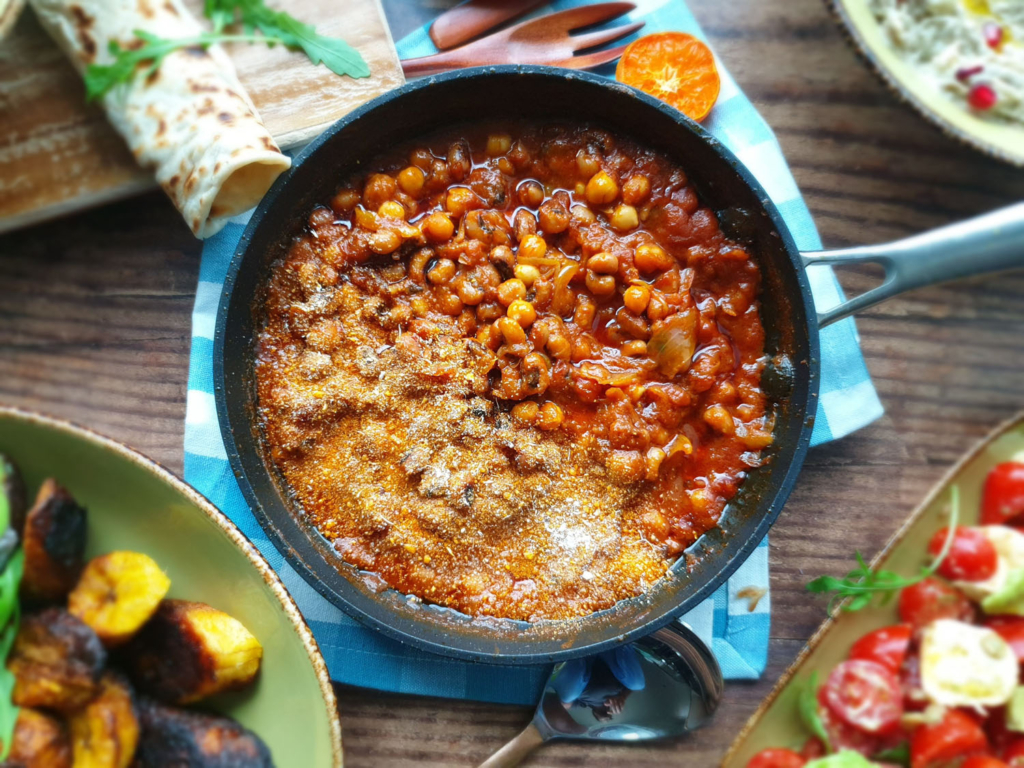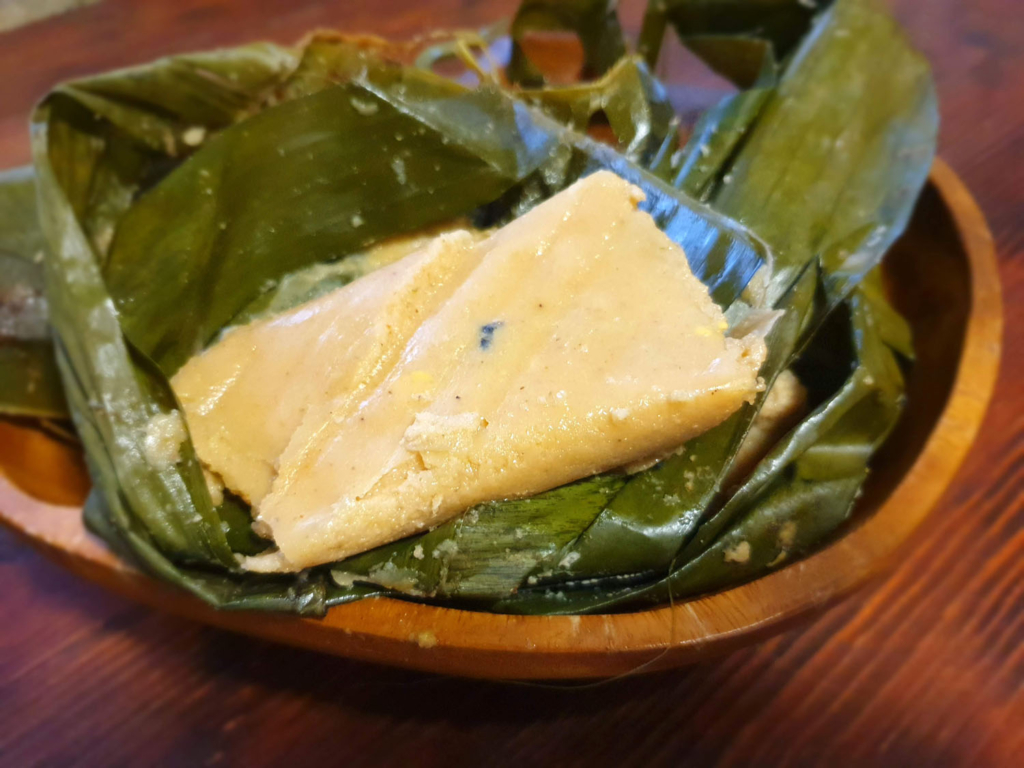West African cuisine packs a punch with smoky and hot, peppery flavours, plus a tinge of umami – and now it’s hotter than ever, topping lists of this year’s trending cuisines. With its plant-based, nutrient-rich profile, moreish flavours and repertoire of simple recipes, it could even be said that West African food has the holy trinity of qualities we need during these strange times: healthy, tasty and easy to cook at home.
Food writer and recipe developer Freda Muyambo walks us through the flavours of her native West Africa, and shares 10 key dishes that will transport you there in the time it takes to fry some chilis.
What Defines West African Food?
While you’ll find common threads emerging across the region, from Nigeria to Senegal, each country’s cuisine has varying interactions with the same ingredients – except chili peppers. This is a quotidian spice to use in building up West African flavours. In fact, part of West Africa was historically referred to as the Pepper Coast, due to these indigenous grains of paradise. Consequently, when other varieties of chili pepper were introduced about 450 years ago – brought to the African coast by Europeans, via the Americas – they were also widely accepted across the region. Today many different varieties of Capsicum annuum, especially Scotch bonnet peppers, are prevalent.


Tomatoes, which were also introduced to Africa from the New World, are another widely accepted addition to most dishes. However Nigerian cuisine, for example, tends to omit them, in favour of a deep paprika-like capsicum known locally as tatashe.
Other ingredients contributing to distinct West African flavours include red palm oil, peanuts, smoked fish or crayfish, ginger and dawadawa or iru (fermented locust beans).
To construct a meal, a stew or a soup is usually served alongside local starches made of rice, yams, plantains, cassava, corn or millet. It is common for the starches to be pounded and formed into a dough-like steamed dumpling. The video below shows yams being pounded, demonstrating the fascinating transformation of the starch and fibres.
A Taste Of Africa At Home
The best way to experience West African cuisine, of course, is through some of the region’s most popular dishes. The following 10 dishes provide a point of entry and can be made at home – perhaps with a substitution here and there.
Ghanaian Light Soup
Ghanaian light soup, typically served with pounded yam (fufu), is a great introduction to West African soups. It is a tomato-rich meat broth, where seafood, chicken, beef or goat are the regular proteins. The process is simple: Just fill a pot with chicken or another meat, alongside onions, tomatoes and chili, then allow the broth to simmer. (As you begin cooking these recipes, you’ll recognise a pattern: A trio of onions, tomatoes and chili forms the base of many West African stews.) Once the vegetables are soft, remove them, blend them, then reintroduce them to the pot to simmer until ready. This soup can be eaten on its own, or with bread. You could also cook potatoes in the soup and eat as a one-pot meal. Another prominent soup is pepper soup, made without tomatoes but rich in traditional West African spices.
Jollof Rice
Rice has become an all-time favourite across the region, but there’s one rice dish that reigns as the king of all meals. Jollof rice is vibrantly orange and made by steaming rice in a tomato-based sauce seasoned with herbs, spices and stock or bouillon cubes. Carrots and green peas can be added, along with meat and fish. This is the party food of West Africa, particularly Ghana and Nigeria. You will often find caterers at weddings or at ‘chop bars’ (food stalls) with their large cauldrons of jollof rice steaming away. To serve, adding grilled chicken, fish stew and sides of fried plantains or savoury steamed bean pudding will complete the feast. A party jollof rice recipe from Nigeria can be followed here.
Thieboudienne
Travelling to Senegal at the other extreme of West Africa, you will find the original inspiration for jollof, known as thieboudienne or riz au poisson. Thieboudienne, Senegal’s national dish, is a complete melange of rice in a rich tomato and vegetable sauce, completed with marinated fish. If you have tried jollof and love it, this is even better.

[Red Red. Photo by Freda Muyambo]
Waache (Waakye)
A rice-and-bean dish called waache (waakye) from Ghana is one of the most popular street foods you will ever find in the area. The rice – cooked with cowpeas (black-eyed peas) and served in a banana leaf alongside a thick meat stew, boiled egg and spaghetti – is mouth-wateringly satisfying. It is also usually served with a hot dark pepper condiment called shito.
Red Red
Now that we have introduced cowpeas, we will begin to see just how important beans are in the region. Cowpeas are also an indigenous food, so most dishes consisting of them might give insight into what would have been eaten there over 500 years ago. A quick and easy dish to try – popular in the entire region – is “red red”, a Ghanaian bean stew. This is often served with a side of fried ripe plantains, but it is just as delicious with rice or another super grain like quinoa.

[Olele. Photo by Freda Muyambo]
Olele And Akara
If that’s not enough about beans… you’ll also find them being completely transformed into a savoury pudding or fried cake, depending on how you cook it. Olele, as it’s known in Gambia and Sierra Leone, is a pudding made by soaking and then liquidising beans with onions, ginger, chilis and other spices. To make it light and airy, oil is added before steaming or baking it. Traditionally, it’s wrapped in banana leaves like a tamale, then steamed; the banana leaf infuses a unique flavour. If the batter is fried instead, you get savoury bean cakes called akara.
West African Peanut Stew
An old dish becomes a new dish: Another crop introduced to the continent by the Portuguese was peanuts, which displaced a different indigenous groundnut from many dishes – but the results are delicious. West African peanut stew is one of the most popular recipes you’ll find from the region, especially among vegans. It can be made with tofu to create a comforting bowl.

[Stewed Greens. Photo by Freda Muyambo]
Stewed Greens
Rich, leaf-filled stews and soups can be found from Nigeria to Sierra Leone, often made from local greens such as amaranth, pumpkin, potato, waterleaf, taro or bitter leaf. Such a wide selection of greens yields a large variety of stews that are healthful and nourishing. Outside of Africa, you can use spinach and young kale or dandelion leaves as an alternative. Finally, cooking with palm oil gives the dish that distinguished West African flavour, as the oil is richly red and has a slightly nutty smell with smoky notes. It is best to serve the dish hot, because palm oil solidifies at room temperature. As it is not always easy to access, a neutral-flavoured vegetable or coconut oil can be used.
Okra Stew
Another must-try is okra stew. Okra being indigenous to West Africa, it’s another ingredient that distinguishes the cuisine from others – and seafood okra stew is especially delicious. A version of fisherman’s stew called fante fante in Ghana’s coastal regions is made with plenty of tomatoes, plus a few okras added towards the end. If you can get a hold of large prawns and a lobster tail, you’ll be able to impress with the following okra stew recipe.

[Okra Stew. Photo by Freda Muyambo]
Puff Puff
Dessert, by its modern definition, does not form part of the usual culinary repertoire of the traditional West African kitchen. Thanks to experimental writers, food explorers, bakers and chefs, however, this may change in a matter of a few years. In the meantime, puff puff (like a beignet or donut) is a very popular snack, and the perfect go-to sweet treat.
West African food holds the key to unlocking world history – and future imagination – where you can see its union with foods from the Americas, Europe and elsewhere create an evolving cuisine. There are so many more dishes to explore from West Africa, however by starting with the stew base trio, then enhancing flavours with the use of red palm oil, peanuts or smoked fish, you are well on your way to replicating these distinguished flavours.
About Freda
Dedicated to celebrating African culture through food, Freda Muyambo is the creator of My Burnt Orange, where she shares the appealing, multifaceted nature of African cuisine every day. An avid traveller, food writer and recipe developer, Freda writes passionately about the flavours of Africa, incorporating thoughtful creativity to her work, which has featured on BBC and CNN. She writes for online and television publications and co-authored her first book, The Science of Spice, in 2018. She was born and raised in Botswana to Ghanaian parents, and now resides in Lagos, Nigeria with her Zimbabwean husband and 4 kids. You can find her on Instagram, Facebook, Pinterest and YouTube.














Sorry, the comment form is closed at this time.